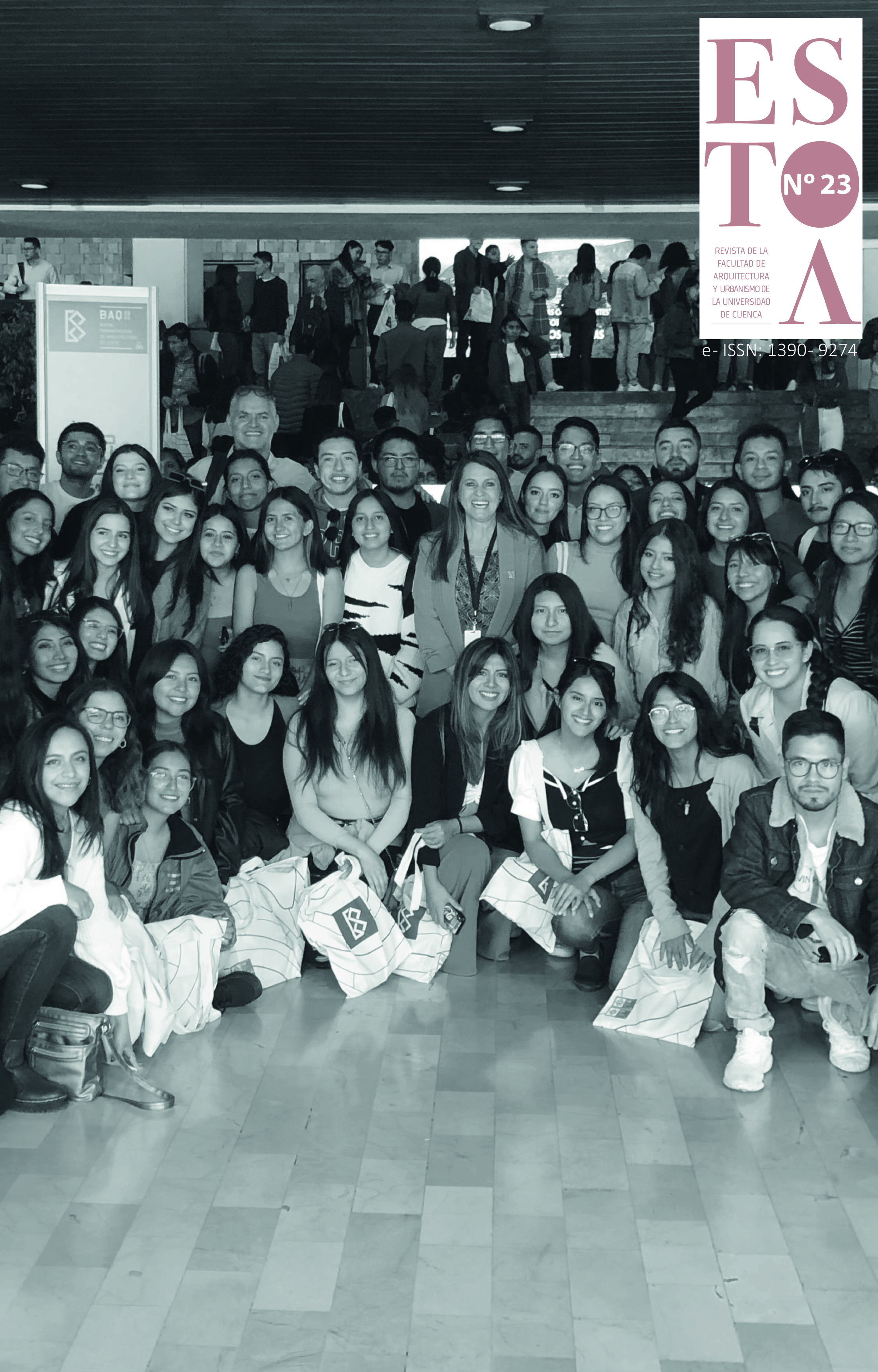Visualizing the differences. Analysis of the street names of Cuenca City, Ecuador
DOI:
https://doi.org/10.18537/est.v012.n023.a04Keywords:
city, street names, data visualization, gender perspective, odonymiesAbstract
In Cuenca (Ecuador), the street naming practice continues to be a controversial issue as part of its development as a city and in the proposal of public policies. This work analyzes the nomenclatures of the city streets using information visualization as a critical tool.
Through an interdisciplinary methodology, which includes critical-historical analysis, gender perspective, and information visualization, this article shows the categorization process for the classification of streets in the urban area of Cuenca. The proposed graphics and interactive maps—six in total—allow a reading of the categories by their statistical content, geolocation, or length, among other parameters. In this sense, the role played by data visualization as a communication tool makes possible new narratives and ways of seeing the city.
Downloads
References
Adebanwi, W. (2012). Glocal Naming and Shaming: Toponymic (Inter) national relations on Lagos and New York’s streets. African Affairs 111(445), 640–661, https://doi.org/10.1093/afraf/ads055
Albornoz, B. (2008). Planos e imágenes de Cuenca. Municipalidad de Cuenca.
Balla, D., Zichar, M., Tóth, R., Kiss, E., Karancsi, G., y Mester, T. (2020). Geovisualization Techniques of Spatial Environmental Data Using Different Visualization Tools. Applied Sciences, 10(19), 6701. https://doi.org/10.3390/app10196701
Bernard, H. R. (2000). Social research methods: Qualitative and quantitative approaches. Sage Publications.
Boehnert, J. (2016). Data Visualization Does Political Things. Proceedings of DRS 2016, Design Research Society 50th Anniversary Conference, (pp. 1-20). University of Brighton. http://www.drs2016.org/387/
Borkin, M. A., Vo, A. A., Bylinskii, Z., Isola, P., Sunkavalli, S., Oliva, A., y Pfister, H. (2013). What Makes a Visualization Memorable? IEEE Transactions on Visualization and Computer Graphics, 19(12), 2306-2315. https://doi.org/10.1109/TVCG.2013.234
Çöltekin, A., Janetzko, H., y Fabrikant, S. I. (2018). Geovisualization. The Geographic Information Science & Technology Body of Knowledge. https://doi.org/10.22224/gistbok/2018.2.6
Fry, B. (2008). Visualizing data: Exploring Data with Processing Environment. O’Reilly.
GAD Municipal Cuenca. (2010). Ordenanza Municipal para la conformación de la base de datos para la nominación de vías urbanas y rurales del cantón Cuenca y sus equipamientos urbanísticos. https://www.cuenca.gob.ec/node/9329
Hassan, A. (2020). What can analyzing more than 2 million street names reveal? Towards Data Science, https://towardsdatascience.com/what-can-analysing-more-than-2-million-street-names-reveal-c94be585759
Hintermann, C. y Pichler, H. (2015). Gendered Spaces in the City: Critical Topography in Geography Education. GI_FORUM-Journal for Geographic Information Science, 3 (1), 287-298. https://doi.org/10.1553/giscience2015s287
Horrillo, P., De la Cruz, L., La Liminal, Molina, J., Ballesteros, M., y Ponte, B. (2017). Calles de Madrid. La historia de Madrid a través de sus calles. https://callesdemadrid.cc/
Jiang, B., y Li, Z. (2005). Geovisualization: Design, Enhanced Visual Tools and Applications. The Cartographic Journal, 42(1), 3-4. https://doi.org/10.1179/000870405X52702
Loureiro, B. (2018). Visualizing Gender of Street Names in Brazil. https://2020.stateofthemap.org/sessions/HLFEER/
MacEachren, A. M., Gahegan, M., Pike, W., Brewer, I., Cai, G., Lengerich, E., y Hardistry, F. (2004). Geovisualization for knowledge construction and decision support. IEEE Computer Graphics and Applications, 24(1), 13-17. https://doi.org/10.1109/MCG.2004.1255801
Manovich, L. (2011). What is visualisation? Visual Studies, 26(1), 36-49. https://doi.org/10.1080/1472586X.2011.548488
Montes, M., Carrión, G., y Urgilés, J. (2018). Ciudades, calles e identidades: Cuenca 1557 – 2018. VI Encuentro Latinoamericano de Metodología de las Ciencias Sociales, (pp. 1-20). Universidad Nacional de La Plata. http://www.memoria.fahce.unlp.edu.ar/trab_eventos/ev.12690/ev.12690.pdf
Munzner, T. (2008). Process and Pitfalls in Writing Information Visualization Research Papers. En A. Kerren, J. T. Stasko, J.-D. Fekete, y C. North (Eds.), Information Visualization 4950, (pp. 134-153). Springer Berlin Heidelberg. https://doi.org/10.1007/978-3-540-70956-5_6
Oto-Peralías, D. (2017). What do street names tell us? The ‘city-text’as socio-cultural data. Journal of Economic Geography, 1–25. doi:10.1093/jeg/lbx030
Sankaranarayanan, A. (2015). Mapping female versus male street names. Mapbox Blog. https://blog.mapbox.com/mapping-female-versus-male-street-names-b4654c1e00d5
Vanguri, S.M. (Ed.). (2016). Rhetorics of Names and Naming. Routledge. https://doi.org/10.4324/9781315693347
Veltman, N. (2013). History of San Francisco Places Names [Mapa]. http://sfstreets.noahveltman.com/#11560
Veltman, N. (2013). Mapping the History of Street Names. Source. https://source.opennews.org/articles/mapping-history-street-names/
Published
How to Cite
Issue
Section
License
Copyright (c) 2022 Estoa. Revista de la Facultad de Arquitectura y Urbanismo

This work is licensed under a Creative Commons Attribution-NonCommercial-ShareAlike 4.0 International License.
The Journal declines any responsibility for possible conflicts derived from the authorship of the works that are published in it.
The University of Cuenca in Ecuador conserves the patrimonial rights (copyright) of the published works and will favor the reuse of the same ones, these can be: copy, use, diffuse, transmit and expose publicly.
Unless otherwise indicated, all contents of the electronic edition are distributed under a Creative Commons Attribution-NonCommercial-ShareAlike 4.0 International License.




